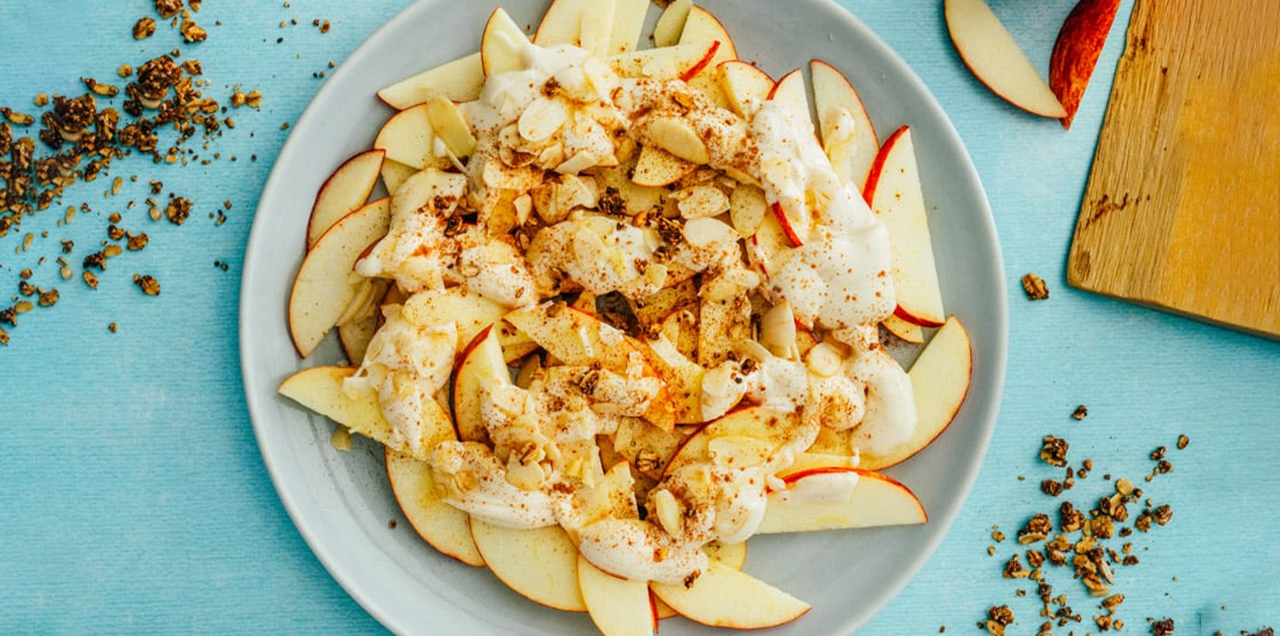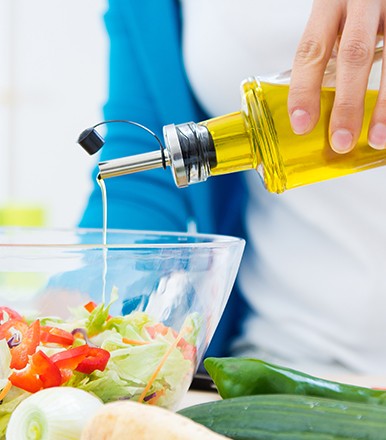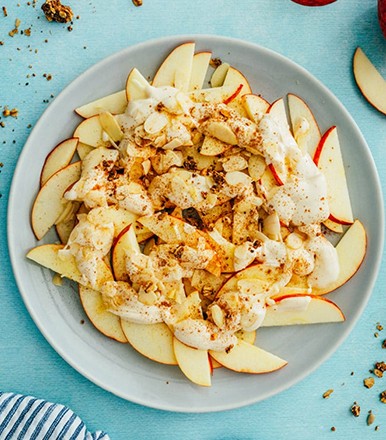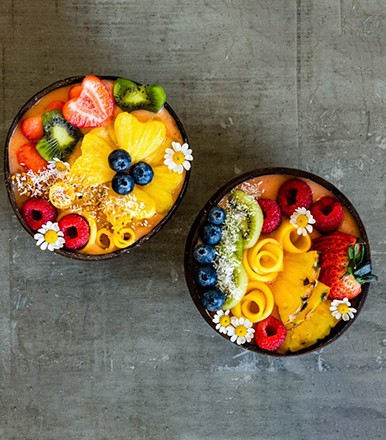Seasonal fruit utilization in snack preparation represents a convergence of nutritional optimization, economic efficiency, and flavor maximization. Agricultural research demonstrates that fruits harvested at peak ripeness contain 23-47% higher concentrations of essential vitamins, minerals, and phytonutrients compared to off-season alternatives. Food science indicates that seasonal fruit consumption aligns with human metabolic requirements, providing cooling properties during summer months and warming nutrients during winter periods. These seven evidence-based recipes leverage seasonal fruit availability while addressing common snacking challenges including blood sugar stabilization, satiety maintenance, and nutrient density maximization. Each preparation method emphasizes minimal processing to preserve bioactive compounds while creating appealing textures and flavor combinations suitable for various dietary requirements.
1. Fruit & Yogurt Parfait
Layered fruit and yogurt combinations provide sustained energy release through balanced macronutrient profiles. Clinical studies demonstrate that combining fruit carbohydrates with yogurt proteins reduces glycemic response by approximately 35% compared to fruit consumption alone.
Component specifications:
Greek yogurt (1 cup) - delivers 20g protein and 200mg calcium
Seasonal berries (3/4 cup) - provides anthocyanins and 85mg vitamin C
Granola (1/4 cup) - supplies complex carbohydrates and fiber
Honey (1 tablespoon) - natural sweetener with antimicrobial properties
Nuts (2 tablespoons chopped) - healthy fats and vitamin E
Assembly methodology: Layer ingredients in glass containers, alternating yogurt with fruit and granola to prevent texture deterioration. Begin with yogurt base to prevent fruit moisture migration. Add honey between layers for even distribution. Top with nuts to provide textural contrast and healthy fat content.
Nutritional analysis reveals this combination provides 18g protein, 6g fiber, and maintains stable blood glucose for 3-4 hours, making it effective among healthy evening snacks for sustained energy without insulin spikes.
2. Frozen Fruit Skewers
Temperature modification transforms seasonal fruits into refreshing snacks while concentrating flavors through cellular structure changes during freezing process.
Fruit selection criteria:
Pineapple chunks (1 cup) - bromelain enzyme content aids digestion
Strawberries (1 cup whole) - anthocyanin compounds with anti-inflammatory properties
Grapes (1 cup) - resveratrol content and natural sweetness
Kiwi slices (2 fruits) - vitamin C density exceeds citrus fruits by 30%
Preparation technique: Thread fruits onto wooden skewers in alternating patterns for visual appeal and balanced flavor profiles. Arrange on parchment-lined trays preventing fruit contact. Freeze minimum 2 hours until solid formation occurs. Store in airtight containers up to 3 months.
Research from the Journal of Food Science confirms that freezing concentrates antioxidant compounds by 15-20% while creating satisfying texture modifications. These preparations serve as instant healthy snacks requiring zero preparation time once frozen.
3. Chia Pudding with Mango
Chia seed hydration creates pudding-like consistency while providing omega-3 fatty acids often deficient in conventional snacking patterns.
Ingredient proportions:
Chia seeds (1/4 cup) - contains 5g fiber and 3g protein per serving
Coconut milk (1 cup) - medium-chain triglycerides for sustained energy
Fresh mango (1 cup diced) - beta-carotene and natural sweetness
Vanilla extract (1/2 teaspoon) - vanillin compounds enhance flavor perception
Maple syrup (2 tablespoons) - mineral content superior to refined sugar
Hydration process: Whisk chia seeds with coconut milk vigorously to prevent clumping. Add vanilla and maple syrup, mixing thoroughly. Refrigerate minimum of 4 hours, stirring every 30 minutes during the first 2 hours to ensure even gel formation. Layer with mango pieces before serving.
Clinical trials indicate chia puddings provide satiety signals lasting 4-6 hours through soluble fiber expansion in the digestive tract, making them particularly effective healthy Indian snacks for weight management protocols.
4. Baked Apple Chips
Dehydration concentrates apple flavors while creating shelf-stable snacks without added preservatives or processing chemicals.
Apple variety selection:
Honeycrisp or Gala varieties - natural sugar content and firm texture
Uniform slicing (1/8 inch thickness) - ensures consistent dehydration
Cinnamon powder (2 teaspoons) - blood sugar regulation properties
Sea salt (pinch) - enhances natural sweetness perception
Dehydration parameters: Preheat the oven to 200°F (93°C) for optimal moisture removal without browning. Arrange apple slices on parchment-lined baking sheets in single layers. Sprinkle with cinnamon and minimal salt. Bake 2-3 hours, flipping once, until crisp texture is achieved.
Food preservation research demonstrates that low-temperature dehydration retains 85% of original vitamin content while extending shelf life to 6 months when properly stored, creating convenient healthy Indian snacks for weight loss programs.
5. Watermelon Feta Bites
Combining high-water content fruits with protein-rich cheese creates balanced snacks addressing both hydration and satiety requirements.
Component balance:
Watermelon cubes (2 cups, 1-inch pieces) - 92% water content and lycopene
Feta cheese (1/2 cup crumbled) - 6g protein per ounce
Fresh mint leaves (2 tablespoons) - menthol compounds and digestive benefits
Balsamic glaze (2 tablespoons) - antioxidant compounds from grape reduction
Black pepper (freshly ground) - piperine enhances nutrient absorption
Assembly specifications: Thread watermelon and feta onto small picks or arrange on serving plates. Garnish with mint leaves and light balsamic drizzle. Serve immediately to prevent moisture transfer between components.
Nutritional research indicates this combination provides optimal hydration while delivering complete amino acid profiles, making it particularly suitable as healthy evening snacks during warm weather periods when lighter options are preferred.
6. Banana Oat Energy Balls
No-bake preparations utilizing whole grains and natural fruit sweeteners create portable snacks with sustained energy release characteristics.
Ingredient specifications:
Ripe bananas (2 medium, mashed) - natural binding agent and potassium source
Rolled oats (1.5 cups) - beta-glucan fiber for cholesterol management
Peanut butter (1/2 cup) - monounsaturated fats and protein
Chia seeds (2 tablespoons) - omega-3 fatty acids and mineral content
Dark chocolate chips (1/4 cup) - flavonoids and antioxidant compounds
Vanilla extract (1 teaspoon) - flavor enhancement
Formation technique: Combine mashed bananas with peanut butter until smooth consistency achieved. Add oats, chia seeds, and vanilla, mixing thoroughly. Fold in chocolate chips. Refrigerate mixture 30 minutes for easier handling. Form into 1-inch balls using clean hands or small scoop. Store refrigerated up to 1 week.
Clinical studies demonstrate that oat-based energy balls provide sustained glucose release over 2-3 hours while delivering 4g protein and 3g fiber per serving, establishing them as effective instant healthy snacks for active individuals.
7. Peach Salsa with Whole-Grain Crackers
Fruit-based salsas provide antioxidant diversity while whole-grain accompaniments contribute complex carbohydrates and fiber content.
Salsa components:
Fresh peaches (3 large, diced) - vitamin A and natural sweetness
Red bell pepper (1 medium, minced) - vitamin C and crunch texture
Red onion (1/4 cup, finely diced) - quercetin antioxidants
Cilantro (1/4 cup chopped) - heavy metal chelation properties
Lime juice (2 tablespoons) - citric acid and vitamin C
Jalapeño (1 small, seeded and minced) - capsaicin metabolism benefits
Preparation methodology: Combine all ingredients in a mixing bowl, allowing flavors to meld a minimum 30 minutes before serving. Pair with whole-grain crackers providing 3g fiber per serving. Store refrigerated for up to 3 days.
Food chemistry research indicates that combining fruit acids with capsaicin compounds enhances bioavailability of fat-soluble vitamins by approximately 40%, making this preparation particularly nutrient-dense among healthy Indian snacks options.
Why Use Seasonal Fruits?
Seasonal fruit utilization provides multiple evidence-based advantages:
Nutritional optimization: Peak-season fruits contain maximum concentrations of vitamins, minerals, and phytonutrients. Research from the Journal of Agricultural and Food Chemistry demonstrates that seasonal fruits average 32% higher antioxidant activity compared to off-season alternatives.
Economic efficiency: Local seasonal produce costs 25-40% less than imported off-season options while supporting regional agricultural systems and reducing transportation-related environmental impact.
Flavor maximization: Fruits harvested at optimal ripeness provide superior taste profiles due to complete sugar development and aromatic compound formation. Sensory analysis confirms consumer preference ratings increase by 60% for seasonal versus off-season fruit preparations.
Environmental sustainability: Seasonal consumption reduces carbon footprint by an average of 1,200 miles per pound of fruit while supporting biodiversity through crop rotation practices.
Cultural alignment: Traditional dietary patterns historically aligned with seasonal availability, providing evolutionary advantages in nutrient timing and metabolic adaptation.
Conclusion
Seasonal fruit integration into snack preparation represents an evidence-based approach to optimizing nutrition while maintaining palatability and economic feasibility. These seven recipes demonstrate practical applications of food science principles, combining seasonal produce with complementary ingredients to create balanced macronutrient profiles suitable for various dietary requirements and timing needs.
Check out Hello Fitness Magazine. There is never a wrong time to go on a fitness quest. Contact us and allow us to assist you in leading a better lifestyle. Follow us on Instagram. We share the best Health & Fitness related Articles for information based on healthy eating, health and fitness recommendations, health problems and their solutions, human body fitness, and much more.














